You are using an out of date browser. It may not display this or other websites correctly.
You should upgrade or use an alternative browser.
You should upgrade or use an alternative browser.
The Ice Age Cometh! Forget Global Warming!
- Thread starter Gaby
- Start date
Tropical Storm Beta Makes Landfall On Texas - The Sun Awakens - Climate Fraud Exposed - LIA Science
Premiered Sep 22, 2020
Strong agitation and return of the #neige at the end of the week #pyrenees early episode in sight https://meteopyrenees.fr/actualites/%e2
A change of weather is approaching that will take us directly to autumn days, with highs of 20 ºC, snow and winds. we tell you https://bit.ly/32RHuS8#ElTempsTV3
Strong agitation and return of the #neige at the end of the week #pyrenees early episode in sight https://meteopyrenees.fr/actualites/%e2
A change of weather is approaching that will take us directly to autumn days, with highs of 20 ºC, snow and winds. we tell you https://bit.ly/32RHuS8#ElTempsTV3
Recently a sudden and potentially unprecedented mass die-off of migratory birds occurred in New Mexico and elsewhere, which appeared to have killed hundreds of thousands of birds, and perhaps even millions, scientists estimate according to Science Alert.
The article mentions the recent 'cold spell' but focuses mainly on the West Coast wildfires as a cause due to smoke inhalation and smoke which could have forced the birds to change their migratory routes, which in itself might have exhausted the birds.
However, in this article from Electroverse, researchers at the University of New Mexico think the birds died of starvation due to the record-cold and snow.
The article mentions the recent 'cold spell' but focuses mainly on the West Coast wildfires as a cause due to smoke inhalation and smoke which could have forced the birds to change their migratory routes, which in itself might have exhausted the birds.
However, in this article from Electroverse, researchers at the University of New Mexico think the birds died of starvation due to the record-cold and snow.
Researchers at the University of New Mexico believe it was the RECORD COLD WEATHER that caused the hundreds of thousands of birds to fall from the NM skies earlier this month, due to a lack off edible insects and hypothermia.
For weeks social media was ablaze with speculation and theories, and it being social media, one cause was permitted to take-flight: the California wildfires. However, objective science has now spoken and, as usual, it completely contradicts the mainstream narrative.
According to UNM Ornithology PhD students Jenna McCullough and Nick Vinciguerra, who were busy collecting samples around the Sandia Mountains while the parrots on SM were blindly tweeting #climatebreakdown!, the historic Arctic front that rode anomalously-far south on the back of a meridional jet stream flow was the primary cause of the deaths.
......
Now, the question is why did the FT publish these two positive reviews?
[...]
It's difficult to say at this point. I guess future will tell.
For sure there seems a "veneer" approach, yet it makes me think of the C's on overlapping camps (not those words exactly - think it was more in line with circles). Without searching the exact words, they are overlapping and yet at odds with each other in terms of outcomes, and when to pull the trigger (or not to pull any trigger). We see that camp A did just that this past spring under the guise of covid, under the already established programmed mechanism of AGW, and the changes they can enforce. Camp A (here described by CJ Hopkins as 'GloboCap') may result in camp B having further losses (obvious this has/is happening), and camp B (not perfect) does not appreciate it, a camp with their own ideas - and perhaps some shared societal ideas of a better nature. Then there is the possibility of a camp C that may yet align with camp B, and both may be closer to the people.
Reading old history from three hundred years ago, the printing presses operated to attack or defend differing positions (of course this has been a constant); in the interests of political/economic camps, and sometimes it was done in creative ways against those with wishful thinking aligned against the people, and carefully done over time with a final chapter outside their initial 'veneer' (to use your word again) that people could no longer ignore having captured their sensibilities (also factoring their wallets and stomachs). Back then, the oligarchs survived or they were semi-defeated by the pen, the tower and bars - and worse, with the traditional public's loud voices taking over the charge. With the way things are going, camp A will have a harder time defending their AGW leaning Tower of Pisa, let alone their covid-fizzle that anyone who can read a graph can see, and then there are their designs for our electronic bondage (perhaps the capstone of their tunnel vision of utopia) that appeals to some, rejected by many. Thus, they can only enforce for so long (while causing a lot of damage in the interim) until the pendulum again moves the other way. Unfortunately, the stack is loaded, and a lot of powerful people have taken a knee.
Looking back into history, and one might think it does not change, it is not just one or the other in camps, there are the anti-oligarch oligarchs, the anti-imperialist imperialists (or monarchists et cetera). One might say there are anti-banker bankers, the anti-democrat democrats, the anti-republican republicans, just as there are the anti-journalist journalists and anti-globalist globalists caught where they are, so nothing is ever clear or settled - jockeying for positions in their overlapping and opposite ways - switching alliances (both STS and STO driven).
One never knows what can happen.
Back to polar bears in the FT article you quote, Pierre, noted Bjorn Lomborg in his book had said:
“If we want to protect [polar bears], rather than dramatically reducing carbon dioxide emissions to try to tweak temperatures over many decades with a clearly uncertain impact . . . our first step should be to stop shooting them”.
Can appreciate him dispelling one fallacy of the AGW crowd, yet he inserts another that does not make much sense in terms of the population reference (the reality of the arctic) and stopping the hunting of them, which is limited anyway, with the exception of the Inuit who do not harvest for food and clothing and who have quotas and may face deductions for when they kill them in self-defense (that is a problem for them - attacks on their communities from growing poplar bear populations):
For management purposes, there are 19 subpopulations of polar bears across the circumpolar world. Of those, 12 subpopulations are located mostly in Nunavut, though some overlap with other jurisdictions.
[...]
Charlie Inuaraq called on NTI and the GN to promote Inuit knowledge of polar bear management, saying news reports should include the perspectives of Inuit as well as scientists.
“Put the news out about what we do,” he said. “It’s misleading.”
He called it “bothersome” to have researchers come into his community for short periods of time, and then dictate to residents how many bears can be hunted.
“They take their research over our traditional knowledge,” he said.
Qikiqtarjuaq HTO representative Loasie Alikalaqtuq said Inuit subsistence hunting is a right.
“It’s what I eat and what I use for clothing,” he said.
“But we pay respect to the animals,” he said. “The polar bear is an intelligent, complicated, thinking species.”
It will be interesting to see who, if any, follows suit in the publishing world and the strength of their direction. Perhaps these cracks will open up to more balance, yet at this point some shocking outside intervention will be required before people start to take real notice.
NORTH JET STREAM: MASSIVE DECAY OF THE NORTHERN JETs
23 September 2020
Regarding the ice melt in the Arctic ... now you can see on the jet stream that a fragment regulates the heat and cold precisely in this polar region - a very strongly charged jet fragment that moves the Polar Vortex with its atmospheric cold air currents over the eastern 60th parallel chases - the result: extreme, sometimes local weather aberrations! - I recommend everyone to put on their winter tires very soon - the weather will be unpredictable and extreme!

23 September 2020
Regarding the ice melt in the Arctic ... now you can see on the jet stream that a fragment regulates the heat and cold precisely in this polar region - a very strongly charged jet fragment that moves the Polar Vortex with its atmospheric cold air currents over the eastern 60th parallel chases - the result: extreme, sometimes local weather aberrations! - I recommend everyone to put on their winter tires very soon - the weather will be unpredictable and extreme!
Two recent articles on the Mini Ice Age from Electroverse:
“EARTH IS ABOUT TO ENTER A MINI ICE AGE” — ROBERT FELIX
Robert W Felix, author of “Not by Fire but by Ice” and proprietor of iceagenow.info, has written a great article entitled “Earth about to enter Mini Ice Age” — below is my abridged version.
I’ve been saying this for years, begins Felix, but now we’re starting to hear it from the mainstream media. As power-hungry politicians ramp up their man-made global warming propaganda, some scientists warn that a far different type of climate change is headed our way.
We should be bracing for a prolonged solar minimum that could last for decades, until the 2050s, is the stark advice coming from Valentina Zharkova, professor at Northumbria University in Newcastle, England.
"The Sun is approaching a hibernation period," says Zharkova, who holds a BSc/MSc in Applied Mathematics and Astronomy, and a Ph.D. in Astrophysics: "Less sunspots will be formed on the solar surface and thus less energy and radiation will be emitted towards the planets and the Earth."
This could cause global temperatures to drop by one degree Celsius, warns Zharkova-and while a 1C drop may sound insignificant, it is more than enough to trigger a slowdown in agricultural production: "This would dramatically effect food harvests in middle latitudes, because the vegetables and fruits will not have enough time for harvesting," explains Zharkova.
These shorter growing seasons might mean empty supermarket shelves and even famine: "It could lead to a food deficit for people and animals, as we have seen in the past couple of years when the snow in Spain and Greece in April and May demolished the veggie fields, and the UK had a deficit of broccoli, and other fruits and veggies." Zharkova also points to the recent unusual chills in Canada and Iceland as evidence of the Grand Solar Minimum already taking hold, and she concludes by saying "we can only hope that the mini ice age will not be as severe as it was during the Maunder minimum" (a climatic 'event' which brought about crop failure, starvation, disease, social unrest, and the untimely deaths of millions upon millions of people).
The COLD TIMES are returning, the mid-latitudes are REFREEZING, in line with historically low solar activity, cloud-nucleating Cosmic Rays, and a meridional jet stream flow. Both NOAA and NASA appear to agree, if you read between the lines, with NOAA saying we're entering a 'full-blown' Grand Solar Minimum in the late-2020s, and NASA seeing this upcoming solar cycle (25) as "the weakest of the past 200 years", with the agency correlating previous solar shutdowns to prolonged periods of global cooling here.
BRITISH ASTROPHYSICISTS: “MINI ICE AGE IS ACCELERATING – NEW ‘MAUNDER MINIMUM’ HAS BEGUN” + THE BEAUFORT GYRE
“We are plunging now into a deep mini ice age,” says British astrophysicist Piers Corbyn, “and there is no way out”.
For the next 20 years it’s going to get colder and colder, on average, says Corbyn who holds a B.Sc. in Physics and an M.Sc. in Astrophysics. The jet stream will be wilder: there will be more wild temperature changes, more hail events, more earthquakes, more extreme volcano events, more snow in winters, lousy summers, late springs, short autumns, and more and more crop failures.
“The fact is the sun rules the sea temperature, and the sea temperature rules the climate,” explains Corbyn.
“What we have happening now is the start of the mini ice age … it began around 2013. It’s a slow start, and now the rate of moving into the mini ice age is accelerating.
LITTLE ICE AGE TRIGGERED BY ARCTIC SEA ICE

The Little Ice Age (LIA) was triggered by a large outflow of sea ice from the Arctic Ocean into the North Atlantic, according to the findings of a new paper published in the journal Science Advances.
The paper combines marine sediment cores drilled from the ocean floor from the Arctic Ocean to the North Atlantic, and what these records indicate is an abrupt increase in Arctic sea ice and cold waters exported to the North Atlantic starting around 1300, peaking in mid-century, and ending abruptly in the late 1300s.
Crucially, the provocative paper concludes that external forcing from volcanoes or any other cause may not be necessary for large swings in climate to occur — a previously widely held assumption: “These results strongly suggest that these things can occur out of the blue due to internal variability in the climate system,” said Dr. Martin Miles, researcher in the Institute of Arctic and Alpine Research at the University of Colorado. But the marine cores do also show a sustained, far-flung pulse of sea ice near the Norse colonies on Greenland, an event which coincided with their demise in the 15th century; a cooling climate is thought to have pushed hard on their resilience.
Today, it is feared a similar event may be about to occur.
“We are waiting for a huge burst of cold water to be released from the Beaufort Gyre,” says David Mauriello of the ORP, a release which is is long overdue with the gyre having circulated in-place far longer than is normal. “And when it does this,” continues Mauriello, “it will potentially shut down the Gulf Stream.”
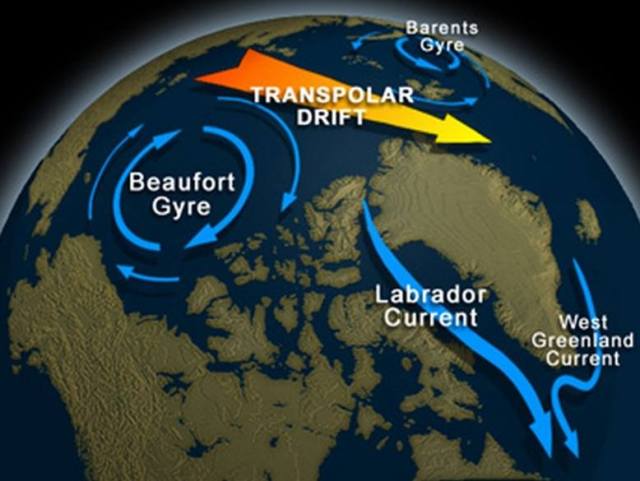
The Beaufort Gyre has been circulating in-place for far longer than is normal. When it finally lets-up, cold water will outflow into the Atlantic, potentially disrupting/shutting-down the Gulf Stream.
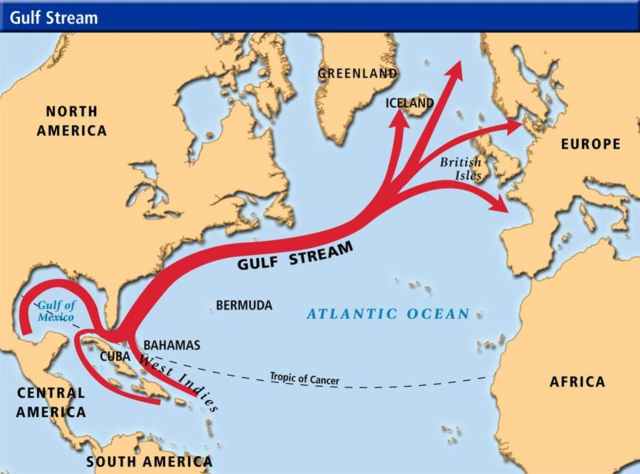
The Gulf Stream is key to Europe having the mild, habitable climate that it does.
A shutting down of the Gulf Stream will lead to cold Arctic-like conditions invading Western Europe almost overnight, concludes Mauriello, with Britain, Ireland, and Scandinavia at the forefront of the blast.
However, it must be stressed that these processes and mechanisms remain poorly understood–but then so do the majority of subjects within the field of climate science: this reality makes the purported 100% confidence and consensus around the impact a trace gas such as CO2 can have on global temperatures even more absurd. Again, that Michael Crichton quote rings true: “Whenever you hear the consensus of scientists agrees on something or other, reach for your wallet, because you’re being had.” And for those out there crying ‘but Crichton’ isn’t a scientist’: 1) err, he brought dinosaurs back to life, and 2) fine, you got me, so I’ll included astrophysicist Piers Corbyn’s views on CO2 instead. So, to conclude: “Carbon dioxide levels do not have any impact –I repeat, any impact– on climate,” states Corbyn, “the CO2 theory is wrong from the start.”
England turned into a "winter fairy tale" in late September.
The bad weather that hit northern England brought "winter" to the county of Yorkshire. Some areas of Leeds and Bradford were under a snow-white cover more than 10 centimeters thick.
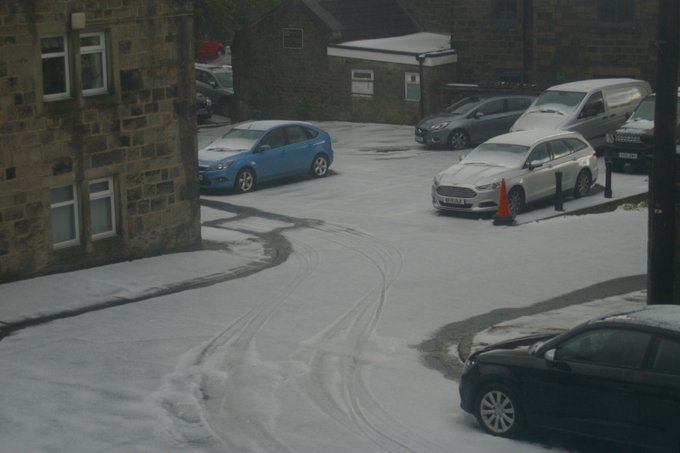
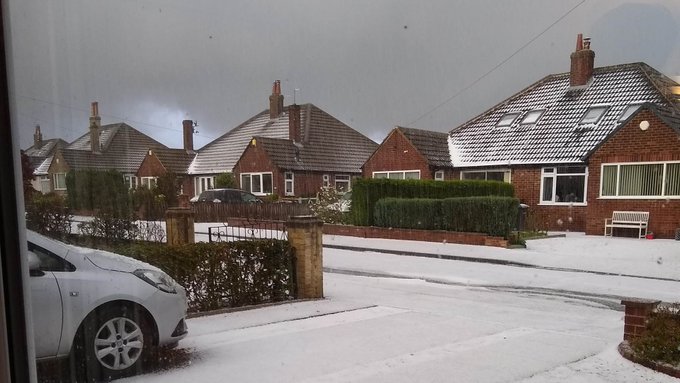
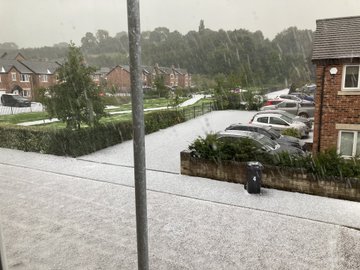
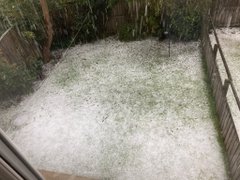

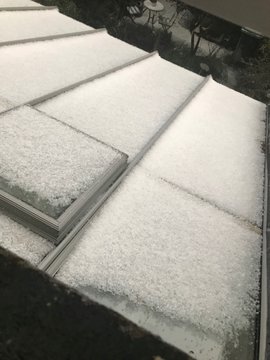

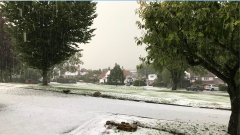

The bad weather that hit northern England brought "winter" to the county of Yorkshire. Some areas of Leeds and Bradford were under a snow-white cover more than 10 centimeters thick.









It seems that starting today a Cyclone coming from the Atlantic will hit Italy with strong winds till 120 km/h in the south and very low temperatures in the North, in some northern regions the temperatures will drop till 3-4 C° during the night which is highly unusual for this time of the year.
I must say that this is the first time I experience such low temperatures for this time of the year. Could it be a sign of what it may come this winter? Like a pretty harsh winter that will give chills to many? Will see.
I must say that this is the first time I experience such low temperatures for this time of the year. Could it be a sign of what it may come this winter? Like a pretty harsh winter that will give chills to many? Will see.
"Robert Felix, a former architect, became interested in the ice-age cycle back in 1991 and has been researching and writing about the possibility of a coming ice age ever since. In the first half, he argued that we are seeing the beginnings of a mini-ice age, which several astrophysicists have also recently concluded, he noted. This cycle may be similar to what happened in the 1600s when the sun had no sunspots. Because of the colder weather in that time frame, there were crop shortages and mass starvation. One of the initial patterns for a small ice age, he explained, is that the rainy season lasts a little longer in the spring, and starts a bit earlier in the fall. It doesn't take many weeks of that to start messing with the food supply, he warned.
Among the signs of unusually early cold weather, he cited the following events from Sept. 9-12th: a surprise winter storm dropping 17 inches of snow in Wyoming, Kansas City setting a new cold record, Denver recording its earliest ever freeze, and Midland, Texas hitting a new cold record that was 14 degrees colder than the previous one. Additionally, many glaciers are advancing, such as in the Western Himalayas, including Mount Everest, he reported. During a mini-ice age, the jet stream will change, and we'll actually see sea levels drop significantly, Felix said. Increased underwater volcanic activity is heating up the oceans, he added, yet above ground volcanoes are also more active, which puts more ash in the sky and contributes to the cooling effect."
Among the signs of unusually early cold weather, he cited the following events from Sept. 9-12th: a surprise winter storm dropping 17 inches of snow in Wyoming, Kansas City setting a new cold record, Denver recording its earliest ever freeze, and Midland, Texas hitting a new cold record that was 14 degrees colder than the previous one. Additionally, many glaciers are advancing, such as in the Western Himalayas, including Mount Everest, he reported. During a mini-ice age, the jet stream will change, and we'll actually see sea levels drop significantly, Felix said. Increased underwater volcanic activity is heating up the oceans, he added, yet above ground volcanoes are also more active, which puts more ash in the sky and contributes to the cooling effect."
Northern Italy covered with early snow
In the Italian commune of Livigno in Lombardy on Friday, September 25, there was heavy snowfall. Mountain ranges in Sondrio province were covered with snow. Locals shared photos and videos of the unusual September landscape on Facebook.
It snowed at night and in some places the temperature dropped to -2.1°C. The authorities warned local residents about the danger of ice, especially at mountain passes.
Roads are still open, but drivers are advised not to leave unnecessarily. In the mountains, serpentines are advised to move only on winter tires or using chains on wheels.
Additional danger is posed by trees bent under the weight of sticking and frozen wet snow.
In the Italian commune of Livigno in Lombardy on Friday, September 25, there was heavy snowfall. Mountain ranges in Sondrio province were covered with snow. Locals shared photos and videos of the unusual September landscape on Facebook.
It snowed at night and in some places the temperature dropped to -2.1°C. The authorities warned local residents about the danger of ice, especially at mountain passes.
Roads are still open, but drivers are advised not to leave unnecessarily. In the mountains, serpentines are advised to move only on winter tires or using chains on wheels.
Additional danger is posed by trees bent under the weight of sticking and frozen wet snow.
zak
The Living Force
6,000 sheep and cows stuck by the snow in the mountains in Savoy in the Glandon pass
A crisis unit is set up this Sunday in Saint-Colomban-des-Villards to feed and evacuate the animals. The fault lies with very heavy snowfall and snowdrifts of two meters which formed during the night of Friday to Saturday.

6.000 sheep and ewes, about a hundred cows, divided into five flocks are trapped in the snow since Friday evening around 1.900 - 2.000 meters of altitude. Below, at 1.500 meters, we are dealing with 30 to 50 centimeters of snow! The icy wind has created snowdrifts two meters high in the area of the Col du Glandon.
An exceptional level of snow
So much snow at this altitude and at this time of the year is exceptional. The reference year is 1974. The snow had disappeared only in spring. Normally the last herds come down from the mountain pastures at the end of October.

Pierre-Yves Bonnivard, the mayor of Saint-Colomban-des-Villards does not hide the unexpected nature of the situation, he who is also president of the USARP - Union for the Safeguarding of Pastoral and Rural Activities. As soon as they heard the weather forecast, the shepherds began to lower the herds that were much higher up. The snowy episode, combined with the wind, was more extreme than expected.
Pierre-Yves Bonnivard therefore triggered at dawn on Sunday morning the communal safeguard plan with a crisis unit in the town hall in conjunction with the Savoie department.
"Evacuating all the animals will take us almost a week. We have to feed them. - Pierre Yves Bonnivard."
First emergency, clearing snow from an access road to transport hay thanks to the department's services. Then, at noon on Sunday, to transport about twenty bales of hay, or 300 kilos of fodder. "Evacuating all the animals will take us almost a week. We can make a herd per day. So we have to feed them in the meantime."

800 sheep of a flock could be evacuated as early as Saturday in Isère, but the others have to wait. "There is too much snow to scrape the ground and feed. We have a priority flock because some ewes are ready to give birth. We do everything so that there are no losses."
Especially since the climate situation is not going to solve the problem naturally. It is not ready to melt: it was - 6° at 1.900 meters of altitude this morning and we expect snow for next Thursday.
DeepL.
6.000 moutons et vaches coincés par la neige en montagne en Savoie dans le col du Glandon
A crisis unit is set up this Sunday in Saint-Colomban-des-Villards to feed and evacuate the animals. The fault lies with very heavy snowfall and snowdrifts of two meters which formed during the night of Friday to Saturday.

6.000 sheep and ewes, about a hundred cows, divided into five flocks are trapped in the snow since Friday evening around 1.900 - 2.000 meters of altitude. Below, at 1.500 meters, we are dealing with 30 to 50 centimeters of snow! The icy wind has created snowdrifts two meters high in the area of the Col du Glandon.
An exceptional level of snow
So much snow at this altitude and at this time of the year is exceptional. The reference year is 1974. The snow had disappeared only in spring. Normally the last herds come down from the mountain pastures at the end of October.

Pierre-Yves Bonnivard, the mayor of Saint-Colomban-des-Villards does not hide the unexpected nature of the situation, he who is also president of the USARP - Union for the Safeguarding of Pastoral and Rural Activities. As soon as they heard the weather forecast, the shepherds began to lower the herds that were much higher up. The snowy episode, combined with the wind, was more extreme than expected.
Pierre-Yves Bonnivard therefore triggered at dawn on Sunday morning the communal safeguard plan with a crisis unit in the town hall in conjunction with the Savoie department.
"Evacuating all the animals will take us almost a week. We have to feed them. - Pierre Yves Bonnivard."
First emergency, clearing snow from an access road to transport hay thanks to the department's services. Then, at noon on Sunday, to transport about twenty bales of hay, or 300 kilos of fodder. "Evacuating all the animals will take us almost a week. We can make a herd per day. So we have to feed them in the meantime."

800 sheep of a flock could be evacuated as early as Saturday in Isère, but the others have to wait. "There is too much snow to scrape the ground and feed. We have a priority flock because some ewes are ready to give birth. We do everything so that there are no losses."
Especially since the climate situation is not going to solve the problem naturally. It is not ready to melt: it was - 6° at 1.900 meters of altitude this morning and we expect snow for next Thursday.
DeepL.
6.000 moutons et vaches coincés par la neige en montagne en Savoie dans le col du Glandon
A great example of the wandering Jet Steam, (due to the lack of current Sunspot activity), and the cause and effects.
+30 cm this morning, at @courchevel (photo of Nova Collie-1850m) and Les Arcs (photo of Seb Fayolle-2000m) in this month of September ... The episode of #neige kept its promises.

 au.news.yahoo.com
24 September 2020 Snip:
au.news.yahoo.com
24 September 2020 Snip:
Spaceweather.com.
September 30 2020
Cosmic Rays Solar minimum is underway. The sun's magnetic field is weak, allowing extra cosmic rays into the solar system. Neutron counts from the University of Oulu's Sodankyla Geophysical Observatory show that cosmic rays reaching Earth in 2020 are near a Space Age peak.
Oulu Neutron Counts
Percentages of the Space Age average:
today: +8.2% High
48-hr change: -0.6%

Max: +11.7% Very High (12/2009)
Min: -32.1% Very Low (06/1991)
explanation | more data
Updated 28 Sep 2020 @ 1600 UT
+30 cm this morning, at @courchevel (photo of Nova Collie-1850m) and Les Arcs (photo of Seb Fayolle-2000m) in this month of September ... The episode of #neige kept its promises.
Australia set to shiver through 'polar plunge' this weekend
If you thought winter was long gone we've got bad news for you – temperatures are set to drop and rain is on its way.
If you’ve completely packed away your winter clothes you might need to rethink your wardrobe with Australia’s southeast in for a “polar plunge”.
The Bureau of Meteorology on Thursday said a “complex low” will bring wet, windy and cold weather to southeast South Australia, Victoria, Tasmania and NSW from late Thursday through Sunday.
Temperatures “are likely” to be 4-10 degrees below average, the bureau said.
Weatherzone meteorologist Ben Domensino told Yahoo News Australia on Wednesday a “procession of fronts” could bring Adelaide and Melbourne’s coldest maximum temperatures for this late in spring, for the first time in more than a decade.
Spaceweather.com.
September 30 2020
Cosmic Rays Solar minimum is underway. The sun's magnetic field is weak, allowing extra cosmic rays into the solar system. Neutron counts from the University of Oulu's Sodankyla Geophysical Observatory show that cosmic rays reaching Earth in 2020 are near a Space Age peak.
Oulu Neutron Counts
Percentages of the Space Age average:
today: +8.2% High
48-hr change: -0.6%

Max: +11.7% Very High (12/2009)
Min: -32.1% Very Low (06/1991)
explanation | more data
Updated 28 Sep 2020 @ 1600 UT
Last edited:
zak
The Living Force
DeepL.Corsican weather: Why was it so cold?
PLB on Wednesday 30 September 2020 at 13:46
It will not have escaped to anybody, our island has known a rather cold episode last weekend. Besides the wind, rain and thunderstorms, the maximum temperatures took on a winter color. This caused a deep depression over Europe and a high pressure system over the near Atlantic.
Corsica was particularly affected on September 26th and 27th, its summits having whitened prematurely!
"In Bastia, the drop was impressive" underlines Patrick Rebillout, director of the Meteo France Center in Ajaccio, "We recorded the lowest maxi for a month of September since 1955: 15.7 degrees on September 27th against 16.6 on September 29th 1955. The other weather stations are not to be outdone: 16.6 degrees in Ventiseri while the previous record was 17.1 on September 19th 1977.
In Marignana, 15 degrees against 16.4 in 2010, 10.1 in Bastelica against 12.9 in 2016, 11 in Bocognano against the previous record was 12.5 in 2007, 12.2 in Castirla against 16 in 1996. And the examples can be multiplied".
Although temperatures have since gradually and slowly recovered, they are still 2 or 3 degrees below seasonal averages.
We will have to wait until the middle of next week to return to near-normal autumn values. Until then, the water will have time to flow under the ... clouds. Next weekend will be rather gloomy!
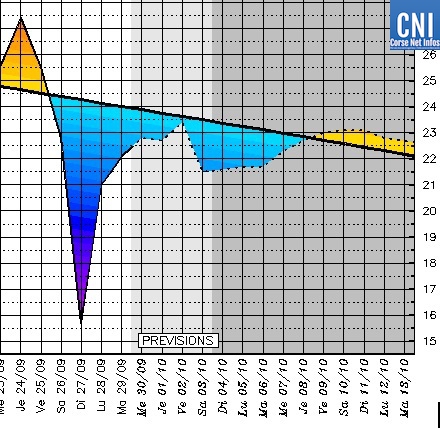
Météo corse : Pourquoi a-t-il fait aussi froid ?
People are waking up. But still in denial.
Sea ice spurred
It moves missing in the southeast of France after rains of up to 400 mm https://bit.ly/3ldQCqF Images and data of the effects of storm Alex
#orages and swell at #Biarritz#paysbasque this morning, wind from West to West 80 km / h in gusts @Ville2Biarritz
A picture from February 2012. The Oude Waal, under the smoke of Nijmegen in the Ooijpolder. The sun is shining, it is freezing hard and the frost-covered trees by the water contrast sharply with the bright blue sky above. In the distance the white plume of smoke from the Power Plant is visible. Hundreds of people skate on the thick ice. From the dike it looks like a teeming anthill. The enthusiastic screams of children are not in the air. You can buy biscuits and sweets at two different tents.
It looks like a painting by a Dutch master, I hear someone say. And then he is talking about Hendrick Avercamp, the most famous of the painters of typical Dutch winter landscapes. Avercamp lived in the midst of what we now call the Little Ice Age. The Little Ice Age ran from roughly 1550 to about 1850, but the cooling to it had started earlier, some say as early as the 14th century. During the Little Ice Age, the average temperatures in our area were about 1 to 2 degrees lower than today. There were far more cold winters than now, often starting in November and sometimes ending only in April.
Beautiful body of work
Avercamp was born in Amsterdam in the winter of 1585, but soon moved to Kampen. He was deaf and dumb and specialized in drawing at a young age. As a lover of painting winter scenes, he was more than happy to have fun during the Little Ice Age. It was hit almost every year and with the help of the sketches he made during the winters, he was able to continue working on his winter landscapes during the summers. A beautiful oeuvre was created, which for winter lovers - especially now that winters usually skip in our time - is more than worth a look.
The background to the Little Ice Age is still being discussed. The cooling came after the medieval climate optimum, in which temperatures were comparable to even slightly higher than now. It was the time when the south of Greenland was colonized by the Vikings, where wine could be grown as far as the British Isles and when even peaches grew in Flanders.
What made the climate suddenly change?
From the 16th century, all of this was suddenly no longer possible. The exact causes of the cooling at that time are still a bit of a guess. According to one scientist, some explosive volcanic eruptions were behind the sudden changes in our climate, others are intrigued by the changes on the surface of the sun that were taking place at the time. For example, the low point of the Little Ice Age seemed to coincide with the period known today as the Maunder Minimum, when there were hardly any sunspots on the surface of the sun. The Maunderminimum started in 1645 and lasted until 1715.
A new study, conducted by scientists from Norway, Sweden, Denmark and the United States, adds a new one to the possible list of causes. From research in the vicinity of Iceland and Greenland, they have been able to reconstruct how the amount of sea ice, which was driven south from the Arctic Ocean through Fram Street on the east side of Greenland and ended up in the Northern Ocean, suddenly became very strong from roughly 1300. increased.
This made the seawater of the North Atlantic Ocean colder and sweeter. And it should have been this development that helped trigger the Little Ice Age, the researchers think. The period in which much more sea ice penetrated the North Atlantic Ocean than usual lasted until the end of the 14th century and then ended as abruptly as it had started. The climate change, which was (partly) the result, lasted longer and lasted until the middle of the 19th century.
External float not always necessary
According to the study authors, these events show that the climate doesn't always need an external driver to change suddenly. This is in line with research by the KNMI, among others, which shows that even in times of a warming climate, such as now, it can still be considerably colder for several decades. Various model simulations have already come up with such, reasonably inexplicable extremes.
However, the research now published also leaves many questions open. One of those questions is what exactly was the cause of that suddenly larger ice transport from the Arctic to the North Atlantic? Was that a change in the Arctic wind regime that pushed the sea ice south? Or was it simply that more ice was formed as temperatures dropped, which made it easier to escape? If the latter is true, it could again be a bit of a "Chicken and the Egg" story.
Chances of recurrence now very small
It moves missing in the southeast of France after rains of up to 400 mm https://bit.ly/3ldQCqF Images and data of the effects of storm Alex
#orages and swell at #Biarritz#paysbasque this morning, wind from West to West 80 km / h in gusts @Ville2Biarritz

